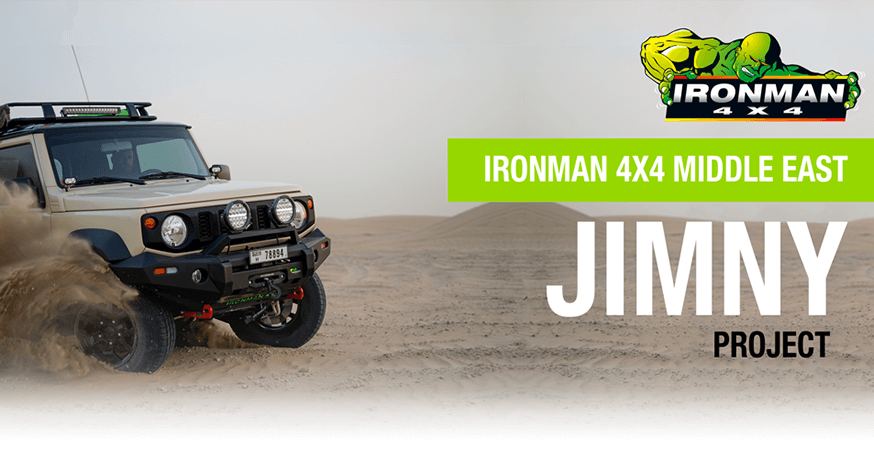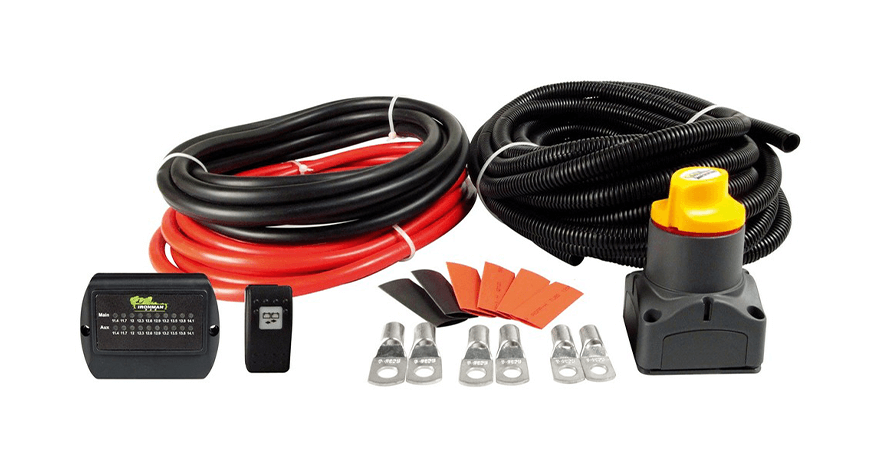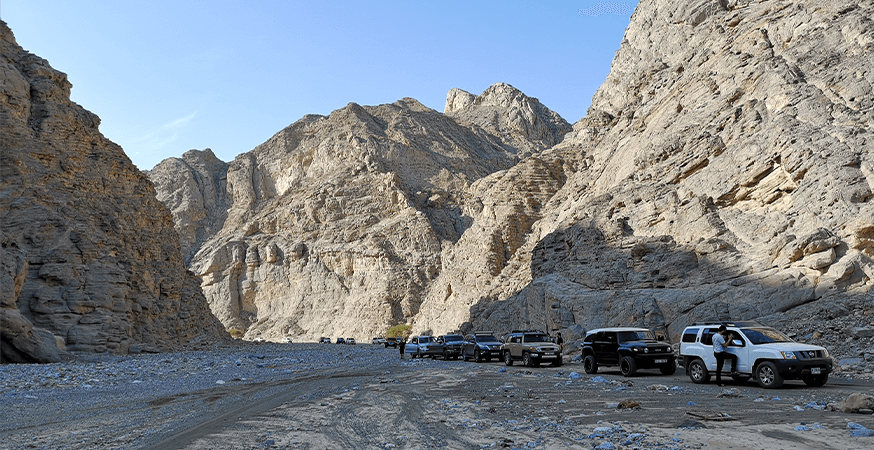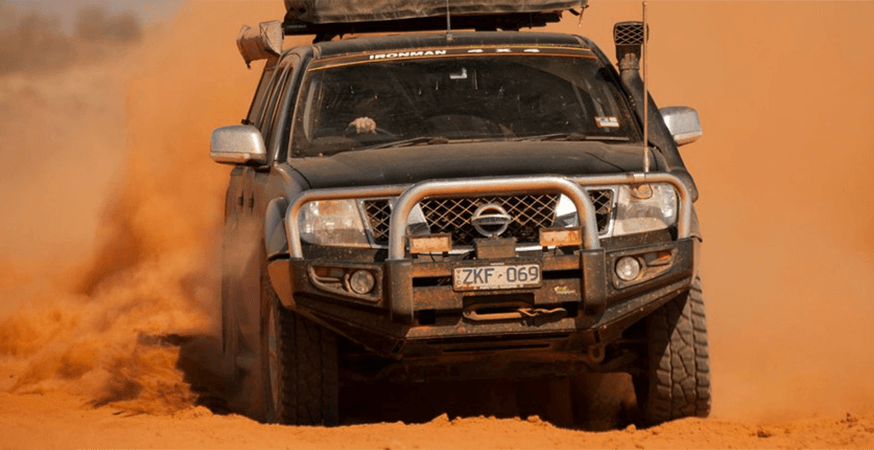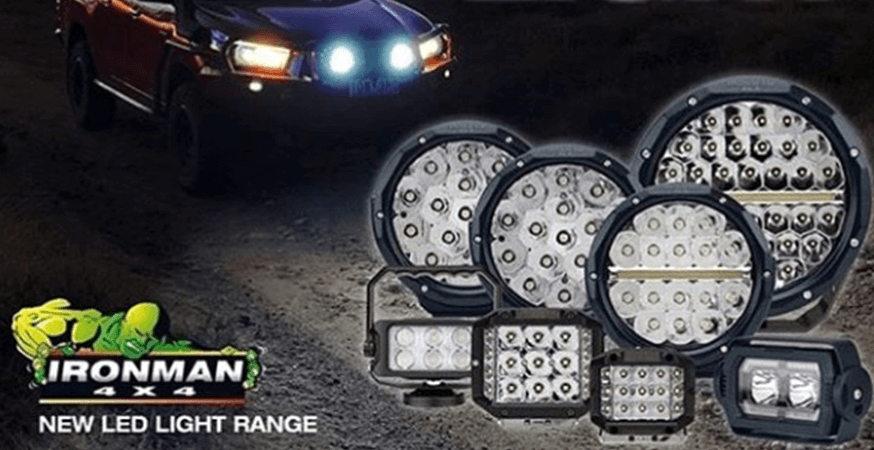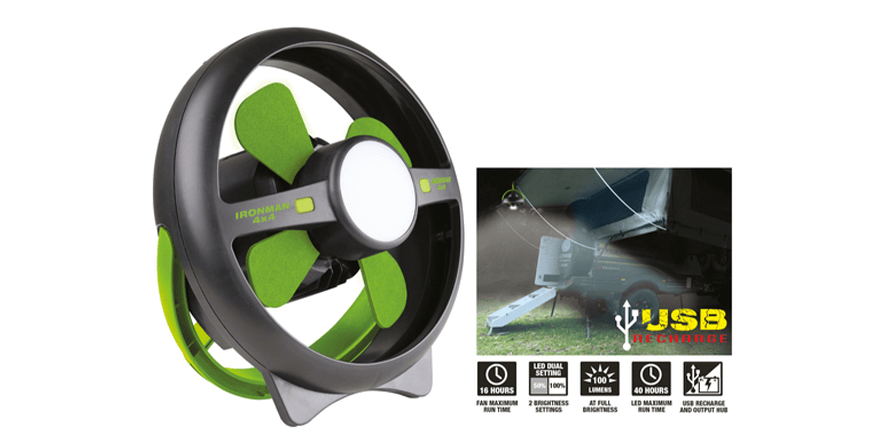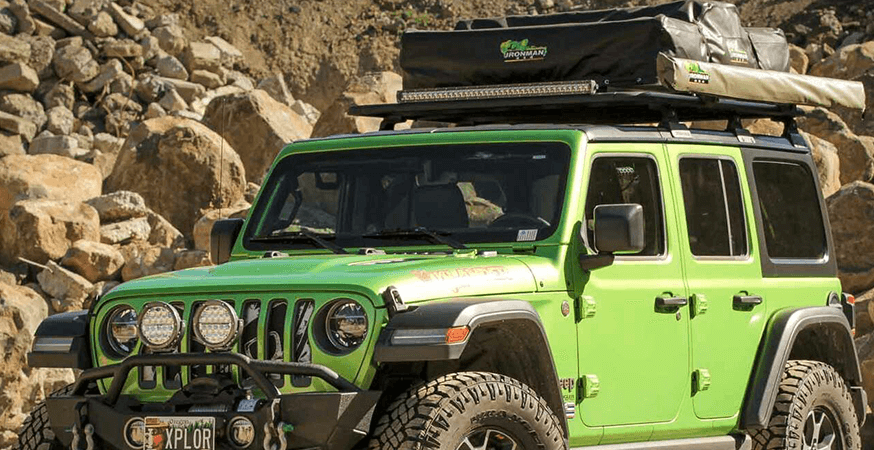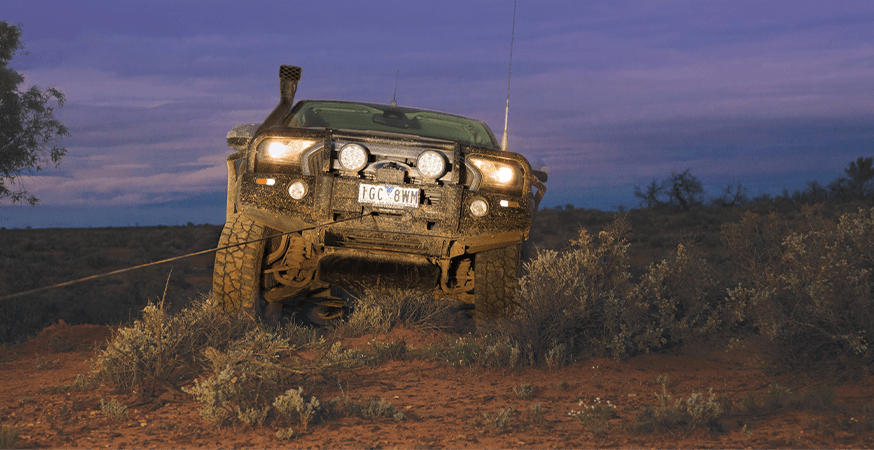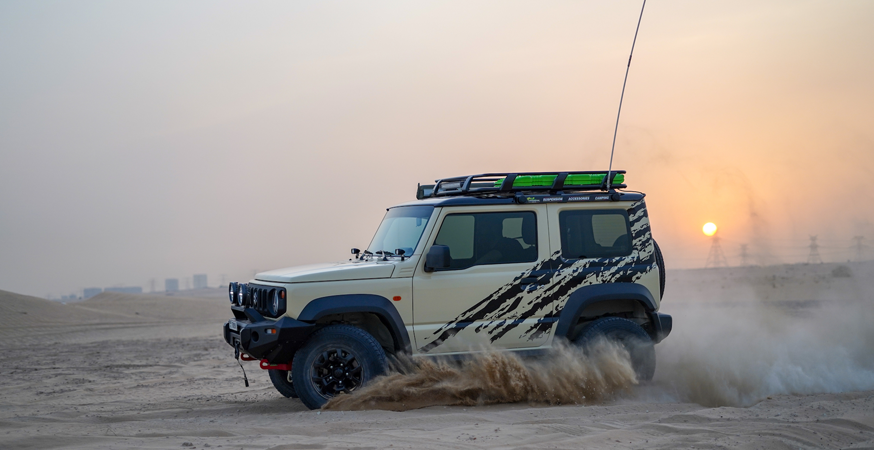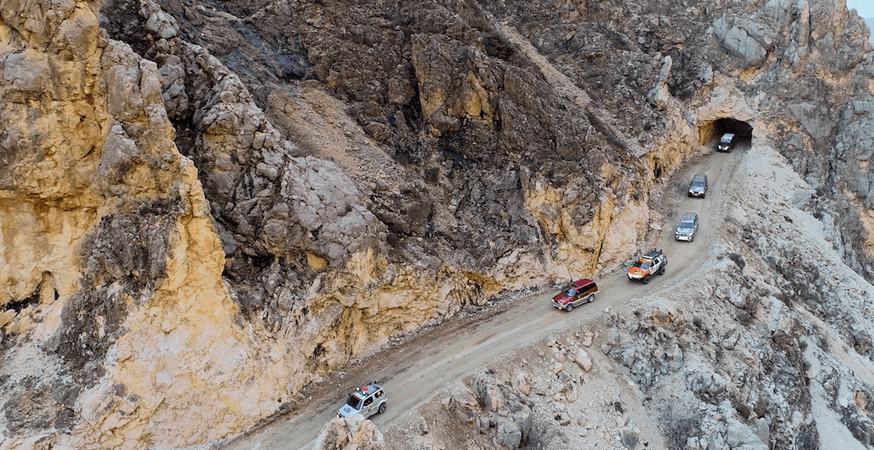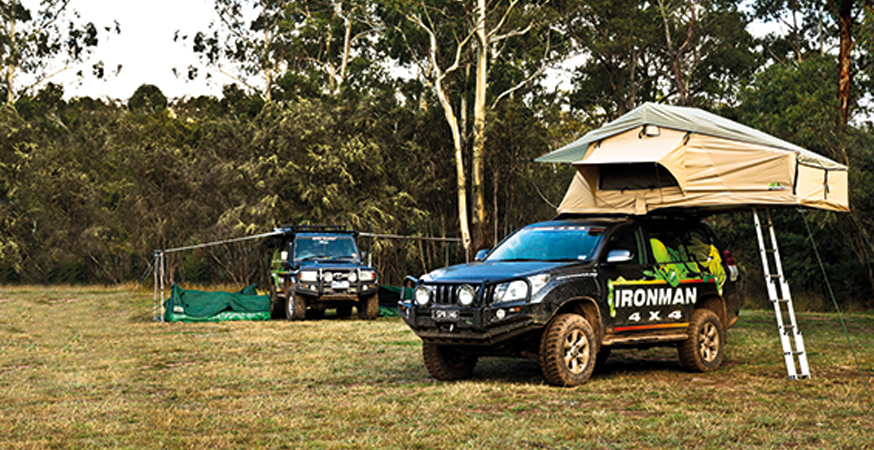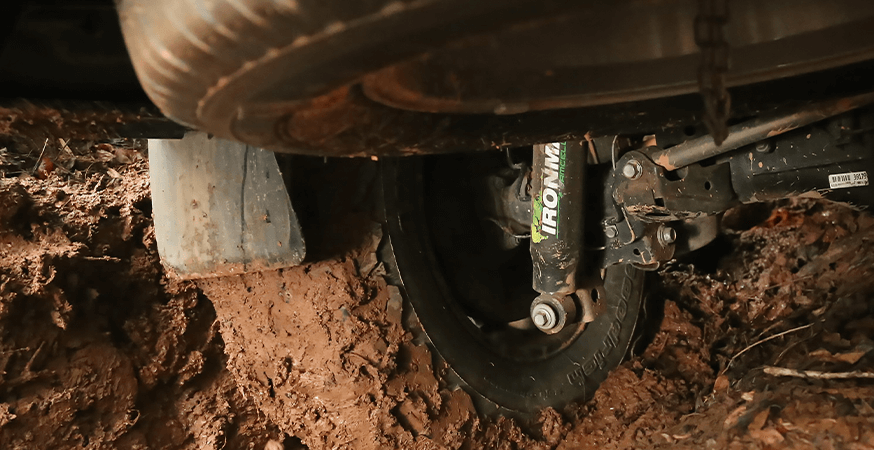Everyone knows one of the first off-road modifications is suspension, but it’s tough to figure out which of the many designs is the best for 4WD touring.
TWIN-TUBE, MONO, REMOTE…there’s so many shock absorber options it’s hard to know which way to look. Each of these designs have pros and cons, but what we’re talking about here is not circuit racing, not rally, not desert racing buggies and definitely not your nan’s Camry. We’re talking about Australian 4WD touring, the harshest proving ground in the world.
Let’s back up a bit and take a look at why high-performance off-road shocks exist and how they work, then you can see how the different designs stack up.
In short, suspension has two main components; a spring, and a damper which is also known as a shock. The spring is usually a leaf, coil or torsion bar. It sets the ride height, carries the weight of the vehicle and does a fair bit of absorbing some of the shock when a car goes over anything other than flat ground, or when there’s weight shift as the cars is cornering, braking or accelerating. But when a spring extends after compression it oscillates like a rubber ball bouncing on concrete. That’s where the shock comes in, to damp down that oscillation and quickly return the vehicle back the spring’s normal state of extension.
Shocks are filled with oil and have a piston rod which goes down into the shock under compression. That rod takes up room, and as the oil is incompressible – so a shock needs something compressible inside it to account for the difference in volume between the rod fully inside the shock and fully outside. In some cases, that’s high-pressure nitrogen gas – hence the term “gas shocks”, in other cases it’s a foam cell, hence the term “foam cell shock”. Gas shocks can be twin-tube or mono-tube, with the difference being whether the shock has a single tube or an inner and outer tube.
Regardless of design, all 4WD shocks face significant durability challenges. When the vehicle bounces up or down it generates kinetic energy, and that energy cannot just disappear, it has to go somewhere or transform as per the laws of physics. In the case of shocks, the energy is transformed into heat, same as when a car is braked its kinetic energy is converted to heat by the brakes.
So just as brakes overheat and fail, so too can shocks. A good offroad shock is not only robust enough to handle abuse, and tuned appropriately for the vehicle and it’s use, but is also able to get rid of heat faster than it generates heat. If it doesn’t, then the shock heats up to failure point and then all sorts of bad things happen; for example, seals blow, or perhaps the oil inside the shock mixes with the gas which means the shock can’t damp effectively and that is bad news for handling and your safety. So, you really, really want to avoid your shocks overheating.
Unfortunately, Aussie off-road tourers operate in about the worst possible environment for shock heating. First, we drive heavy cars with lots of accessories, often upgrading the GVM. Secondly, we do this in hot environments. And third, we drive over corrugations, which involve lots of high-speed up-and-down movements for the damper, generating heat. Oh, and we do all this for long periods of time in remote locations where you really don’t want any equipment failures. So, a shock that can get rid of lots of heat is pretty well essential, and this one reason why everyone is told to swap out the factory suspension for some aftermarket gear which is designed for this sort of work.
So if we need heavy-duty shocks, why not look to motorsport, and maybe high-speed off-road buggies?
These specialist off-road racers run flat out over extremely rough roads, so might have around 800mm of wheel travel compared to say 260mm for a Hilux. And they typically run something called remote-reservoir shocks in order to handle the massive amount of heat generated by the suspension.
The concept behind a remote reservoir shock is simple. Remote reservoirs create an additional oil storage unit, the ‘remote reservoir’, so there’s more oil than could otherwise be the case, and therefore more of a heat sink.
All these design features mean the remote-reservoir shock is better able to dissipate heat than one without a remote reservoir, so what works on a buggy must work on a touring 4X4, right? Wrong. Just because something works in motorsport doesn’t mean it works elsewhere, and one example is race brakes which don’t work effectively until very hot, not something you could live with on the street. In the same way, the remote reservoir shock design doesn’t translate to recreational work. Here’s why.
In order for the extra oil in the remote reservoir to do any good then heat actually needs to get to the reservoir. There’s two aspects to that; location and pumping. With race trucks the reservoir is typically mounted very close to the shock itself, often actually on top of the main shock in a piggyback configuration. In touring 4X4s, there’s less space so the reservoir is typically mounted up inside the wheel arch, connected by a relatively long tube. High up in the wheel arch is a really poor place for cooling because there is little or no airflow, plus the fact that the front shocks are also close to the hot engine, unlike the open-air mount on a mid-engined race buggy. You wouldn’t mount a radiator away from a cooling airflow, and the same applies to shocks.
Then there is the issue of pumping, oil actually flowing to and from the reservoir. You know how a radiator works in a car – cool fluid is pumped into and around the engine, hot fluid comes back into the radiator where it’s cooled and the cycle continues. That’s also how remote reservoir shocks work, but the pump is the up and down action of the shock. In the case of your average touring 4WD suspension there’s not usually enough pumping action to cycle the oil into the remote reservoir because of the limited suspension travel, and because that range of travel isn’t always used – compare that to a race buggy which has far greater travel and uses more of it.
In short, remote reservoir shocks mean you end up paying a lot of money for marketing hype and theoretical benefits that apply to specialised race vehicles, not your touring 4WD. So what can be done to handle this problem of heat dissipation? There are designs more suited to the real-world needs of touring off-roaders, such as Ironman 4×4’s big-bore Foam Cell Pro shock.
A big-bore shock simply means the diameter of the shock body is as large as it can be, and the reason for that is so it can hold more oil. The greater the volume of oil, the greater the ability of the shock to absorb heat, just like boiling a cupful of water in a kettle is a lot quicker than boiling a full kettle. But that’s only part of the solution. No shock can absorb all the heat generated by a 4WD, it’s got to be dissipated and here again the foam cell design has an advantage.
Earlier on we described the issue every shock has when the piston moves into the body – the oil is incompressible, so something has to compress and expand to account for the piston rod taking up space in the shock. In the case of the foam cell design that’s a layer of Nitrile foam with tiny gas-filled cells in it. When the rod enters the shock body those cells are compressed, when the rod exits the cells expand.
The advantage of the foam cell design compared to a conventional gas shock, either twin or monotube, is better heat dissipation. That’s because the foam layer floats in the shock’s outer chamber, so there’s lots of oil in contact with the entire surface of the outer tube which is ideal for heat dissipation, unlike the gas shock approach which has to sacrifice some oil surface area for the gas. The big-bore design also means a lot of outer surface area as well plenty of oil for a heat sink, and both features are ideal for heat dissipation.
Robustness is taken care of too; the twin-tube design of the foam-cell shock means that if there’s an impact to the outer tube, the inner tube is unaffected so the piston can still move up and down, unlike a relatively vulnerable monotube. The foam cell is also low-pressure, in contrast to the high-pressure monotube or remote reservoir, so there’s less stress on the seals, and less need to hand over more coin for regular shock servicing. Unlike the remote reservoir, there’s just one part to the foam cell, so it’s not as complicated, less expensive to buy and easier to install than the remote reservoir design.
Kristian Ristell, Ironman 4×4`s Suspension Product Director says that “when conceiving the Foam Cell Pro shocks our objective was to make the best 4WD touring shock we could, not to make a specific type of shock. It was only after we evaluated a range of potential designs we chose foam cell technology. We actually make mono-tube remote reservoir shocks for some of our private label customers, so we are not unfamiliar with nor against the concept, it’s just not the right approach for off-road touring in everyday 4X4 vehicles – and we’ve got over 20 years of worldwide suspension experience to back that statement up.”
The foam cell design is proven to work. Ironman 4×4 stress-tested various shocks by subjecting them to increasing loads until they failed through overheating, then went out to the Australian deserts and ran tests to see what temperatures were generated in real-world conditions by a variety of 4WD touring vehicles. The Foam Cell Pro ran appreciably cooler than other designs of shocks, never approaching its stress load limit. Refer to the Ironman 4×4 Foam Cell Pro Torture Test – Click Here.
It’s not just touring 4WDs that have proven foam cell technology. Kristian says that “the foundation of the Foam Cell Pro design concept is proven through our involvement with in the military armouring industry. What many people don’t know is Ironman 4×4 supplies thousands of suspensions used in heavily armoured vehicles operating in conflict regions around the world such as the Middle East and Africa. That’s a serious business which has no regard for marketing hype or anything which underperforms.”
Ultimately, every shock design is good for a specific purpose. High-pressure monotubes are great for highly-strung circuit race cars, expensive and bulky remote-reservoirs work on specialist desert racing buggies, and twin-tube gas shocks can be made cheaply which is why you find them on most passenger cars. But the question for most 4WD owners is what’s the best combination of performance, practicality, reliability and robustness for a touring 4WD in real-world off-road touring conditions – and that would be a big-bore Foam Cell Pro shock.


